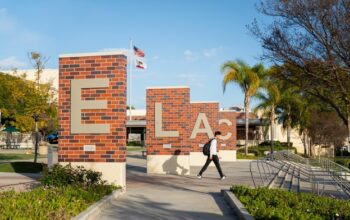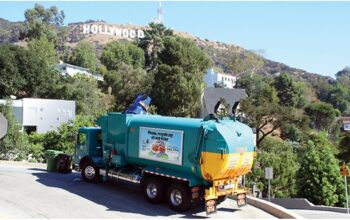Thanks to the Democrats we will have TWO elections on November 5. First, the regular election, for President, etc. Then to get us to spend $40 billion in bonds—principal AND Interest) they are calling a “Special Election”—just so they can scam more money from us while we have the highest prices, poverty, unemployment and among the worst government schools in the nation. Oh, and a massive deficit that will continue for several years.
“
| Scheduling note: WhatMatters is celebrating the Fourth of July and will return to your inboxes on Monday, July 8. |
| California lawmakers met into Wednesday night to finish the November ballot before heading off on summer vacation until Aug. 5. |
| They sent voters two bond issues: $10 billion for climate programs (60-5 in the Assembly, 33-6 in the Senate) and $10 billion for school and community college construction (34-3 in the Senate, 68-1 in the Assembly). |
| They also passed a bill to get the bond issues on the Nov. 5 ballot by calling a simultaneous special election — and to determine the order many of the propositions will appear. The Senate approved it on a 31-8 party line vote. |
| Barreling through interruptions and shouts from pro-Palestinian protestors in the gallery, just after 7 p.m., the Assembly gave final approval to that election measure on a 54-6 vote. With that, legislators set the final list of 10 propositions on the Nov. 5 ballot, after a series of 11th-hour additions and subtractions. |
| To find out more about the measures — and about how propositions work in California and their history — read our newly updated explainer. |
| One bill legislators didn’t vote on: The Democratic version of a proposal to tweak Proposition 47, which was supposed to appear as the first prop on the ballot. That’s because Gov. Gavin Newsom withdrew it from consideration Tuesday night in a political stunner. |
| Republicans who support the Prop. 47 repeal already on the ballot celebrated, and promoted the bipartisan retail theft bill package introduced in June (which will be taken up by the Legislature in August).” |
2024 California ballot measures: What you need to know
BY CALMATTERS JULY 3, 2024UPDATED JULY 4, 2024
Voting stickers are given to voters at the Alexander Hamilton Middle School voting center in Fresno on Nov. 8, 2022. Photo by Larry Valenzuela, CalMatters/CatchLight Local
Much is expected of the California voter.
In any given election year, we may be asked to dust off our labor lawyer hats, brush up on oil and gas regulations, reacquaint ourselves with decades of tax policy, or analyze infrastructure funding. We may have to weigh the moral pros and cons of capital punishment, marriage equality or pig protection and — over and over again — oversee all things dialysis clinic.
This November, voters will decide the fate of 10 thorny policy proposals, including crime, health care, rent control and taxes. This year, there were far more last-minute changes than usual.
Five measures were withdrawn, and another was kicked off the ballot by the state’s highest court. And Gov. Gavin Newsom scrapped a crime measure at the last minute.
But on the final day possible, legislators added two bond issues, one for climate action and another school construction. The 2024 ballot will be more crowded than only seven measures in 2022, the fewest in more than a century.
What are all these propositions really about? How did they make their way to the ballot in the first place? And how did Californians first fall in love with direct democracy?
Here is California’s passion for propositions, explained.
After months of signature gathering, litigating and legislative wrangling, the final list of measures on the Nov. 5 ballot is set. The Legislature directed the Secretary of State’s office to assign numbers to several, and the office set the others. (Reminder: Prop. 1 was Newsom’s mental health measure that narrowly passed in March.)
Proposition 2: Borrow $10 billion to build schools. Legislative Democrats put on the ballot a bond issue to give $8.5 billion to K-12 schools and $1.5 billion to community colleges for construction and modernization.
Proposition 3: Reaffirm the right of same-sex couples to marry. This constitutional amendment from the Legislature would remove outdated language from Proposition 8, passed by voters in 2008, that characterizes marriage as being between a man and a woman.
Proposition 4: Borrow $10 billion for climate programs. Legislative Democrats also placed a bond issue on the ballot that includes $3.8 billion for drinking water and groundwater, $1.5 billion for wildfire and forest programs and $1.2 billion for sea level rise. In part, the money would offset some budget cuts.
Proposition 5: Lower voter approval requirements for local housing and infrastructure bonds. This constitutional amendment from the Legislature would make it easier for local governments to borrow money for affordable housing and other infrastructure. To avoid opposition from the influential real estate industry, supporters agreed to block bond money from being used to buy single-family homes.
Proposition 6: Limit forced labor in state prisons. Lawmakers added this one late — a constitutional amendment to end indentured servitude in state prisons, considered one of the last remnants of slavery. The California Black Legislative Caucus included the amendment in its reparations bill package.
Proposition 32: Raise the state minimum wage to $18 an hour. This initiative seemed a much bigger deal when it was first proposed in 2021. But under existing law, the overall minimum wage has risen to $16 an hour. And lower-paid workers in two huge industries are getting more: Fast food workers received a $20 an hour minimum on April 1 and health care workers will eventually get $25, though the start date has been pushed back to at least Oct. 15.
Proposition 33: Allow local governments to impose rent controls. This is the latest attempt to roll back a state law that generally prevents cities and counties from limiting rents in properties first occupied after Feb. 1, 1995.
Proposition 34: Require certain health providers to use nearly all revenue from a federal prescription drug program on patient care. Sponsored by the trade group for California’s landlords, this measure is squarely aimed at knee-capping the AIDS Healthcare Foundation, which has been active in funding ballot measures (see the rent control one above).
Proposition 35: Make permanent a tax on managed health care insurance plans. This initiative is sponsored by California’s health care industry to raise more money for Medi-Cal and block lawmakers from using the cash to avoid cuts to other programs. The measure would hold Newsom to a promise to permanently secure that tax money for health care for low-income patients.
Proposition 36: Increase penalties for theft and drug trafficking. This initiative may be the most contentious on the ballot. It would partly roll back Proposition 47, approved by voters in 2014.




It is past due time for all voters to come together and vote down any and all propositions (Bonds)that are designed to place more tax money on the backs of the taxpayers. Keep voting no on all Bonds until State, City, County and School districts demonstrate that they can enact a fiscally sound budget and stick to it.